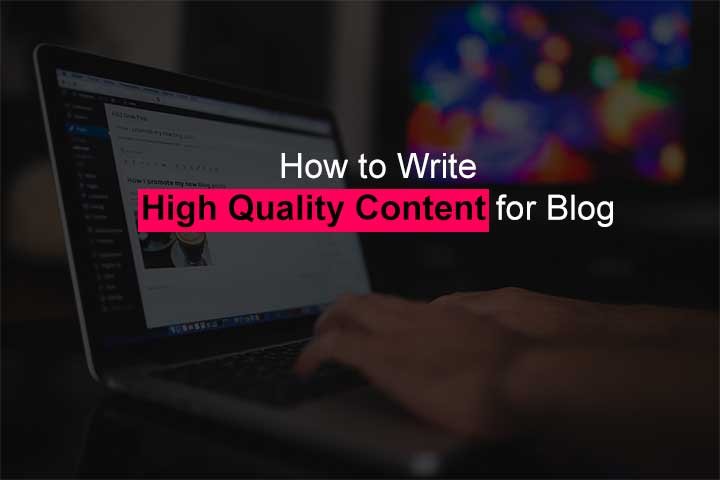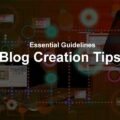Introduction
Welcome to the ultimate guide on how to write high-quality content for a blog. In today’s digital age, where content is king, creating compelling and valuable articles is crucial for attracting and retaining readers. Whether you’re a seasoned blogger or just starting out, this article will provide you with expert tips and techniques to enhance the quality of your blog posts, captivate your audience, and improve your search engine rankings.
Understanding the Importance of High-Quality Content
In a saturated online landscape, producing high-quality content is vital to stand out from the crowd. Quality content not only establishes your credibility as a knowledgeable and trustworthy source but also increases your website’s visibility and organic traffic. Engaging articles have the power to build a loyal readership, encourage social sharing, and ultimately drive conversions. With that in mind, let’s delve into the key aspects of writing top-notch blog content.
Defining High-Quality Content
High-quality content is informative, well-researched, engaging, and valuable to the reader. It goes beyond superficial information, offering in-depth analysis, practical tips, and expert insights. Quality content resonates with the target audience, addresses their pain points, and provides solutions. Moreover, it should be well-structured, visually appealing, and optimized for search engines to ensure maximum reach and impact.
Researching and Planning Your Content
Before diving into writing, thorough research and planning are essential. Identify your target audience, their interests, and the topics they find relevant. Utilize keyword research tools to discover popular search terms in your niche. By understanding your audience’s needs and preferences, you can tailor your content to provide the information they seek, increasing the chances of engagement and conversion.
Crafting Captivating Headlines
The headline is the first point of contact between your content and potential readers. A compelling headline should be attention-grabbing, concise, and accurately represent the article’s content. Use power words, evoke curiosity, or promise a solution to entice readers to click and continue reading. Experiment with different headline structures and formats to find what works best for your target audience.
Writing Engaging Introductions
Once you’ve captured your readers’ attention with a strong headline, the next step is to hook them with an engaging introduction. Start with a captivating opening sentence that sparks curiosity or addresses a common problem. Clearly state the purpose of your article and outline the main points you’ll be covering. Consider sharing a personal anecdote, asking a thought-provoking question, or presenting a surprising statistic to make your introduction memorable.
Structuring Your Content
A well-structured article is easier to read and navigate, ensuring a positive user experience. Organize your content into logical sections using headings and subheadings. The hierarchical structure helps readers scan the article and find the information they need quickly. Utilize H1, H2, H3, and H4 headings to create a clear hierarchy and optimize your content for search engines. The H1 heading should be reserved for the main title of your article, while H2, H3, and H4 headings can be used for subheadings and further categorization of your content.
Using Relevant Keywords and SEO Optimization
To increase the visibility of your blog post in search engine results, it’s essential to incorporate relevant keywords throughout your content. Conduct keyword research to identify popular search terms related to your topic, and strategically place them in your headings, subheadings, and body text. However, ensure that the keywords flow naturally and don’t compromise the readability or quality of your writing. Remember, writing for humans should always be your priority.
Incorporating Visuals and Multimedia
A picture is worth a thousand words, and incorporating visuals and multimedia elements into your blog post can significantly enhance its quality. Use high-quality images, infographics, videos, or interactive elements to complement your written content. Visuals not only break up the text and make it more visually appealing but also help convey information more effectively and engage readers on a deeper level.
Adding Value with Practical Tips and Advice
One of the hallmarks of high-quality content is providing practical tips and advice that readers can implement and benefit from. Share your expertise, insider knowledge, or personal experiences to offer unique insights and solutions. Back up your claims with credible sources and provide actionable steps or recommendations. By delivering tangible value to your readers, you establish yourself as a trusted authority and increase the chances of repeat visits and social sharing.
Formatting and Styling Your Content
Formatting and styling play a vital role in improving the readability and user experience of your blog post. Use short paragraphs, bullet points, and numbered lists to break up the text and make it easier to skim. Incorporate bold, italic, or underlined text to highlight important points or key takeaways. Additionally, choose a legible font, appropriate font size, and sufficient line spacing to ensure comfortable reading across different devices.
Proofreading and Editing for Quality
No matter how informative or engaging your content may be, grammatical errors and typos can undermine its quality and credibility. Take the time to proofread your article thoroughly, checking for spelling mistakes, grammatical errors, and awkward phrasing. Editing is equally important. Ensure your sentences flow smoothly, eliminate redundant or repetitive information, and tighten up your writing to make it concise and impactful.
Optimizing Readability and User Experience
Readability is crucial when it comes to retaining readers’ attention and delivering your message effectively. Use clear and concise language, avoid jargon or technical terms unless necessary, and write in a conversational tone. Break up long sentences and paragraphs, and use transition words to guide readers through your content smoothly. Incorporate subheadings to facilitate scanning and skimming. Prioritize user experience by optimizing your website’s loading speed, mobile responsiveness, and ease of navigation.
Promoting and Sharing Your Content
Creating high-quality content is only half the battle; you also need to promote and share it to reach a wider audience. Utilize social media platforms, email newsletters, and online communities to distribute your blog post. Engage with your readers by responding to comments and encouraging social sharing. Collaborate with influencers or other bloggers in your niche to expand your reach and attract new readers. Don’t forget to leverage the power of search engine optimization (SEO) by building quality backlinks and optimizing your metadata.
Measuring and Analyzing Content Performance
To continually improve the quality of your content, it’s crucial to measure and analyze its performance. Use analytics tools to track metrics such as page views, bounce rate, time spent on page, and social shares. Pay attention to the topics and formats that resonate most with your audience, and tailor your future content accordingly. Experiment with different strategies, analyze the results, and iterate on your content creation process to achieve even higher quality and better engagement.
Conclusion
Writing high-quality content for your blog is a skill that can be honed with practice and attention to detail. By understanding the importance of delivering value to your readers, optimizing for search engines, and enhancing the overall user experience, you can create articles that stand out from the competition and attract a loyal audience. Remember to research and plan your content, craft captivating headlines and introductions, structure your article effectively, incorporate visuals, and provide practical tips and advice. Don’t forget to proofread, optimize readability, and promote your content for maximum reach. By continually measuring and analyzing your content’s performance, you can refine your approach and consistently produce high-quality blog posts that engage, inform, and inspire.
FAQs
1. How long should my blog post be?
The length of your blog post depends on various factors, such as your topic, target audience, and the depth of information you want to provide. In general, aim for a word count between 1,000 and 2,000 words to ensure comprehensive coverage while maintaining reader engagement.
2. Should I prioritize SEO or quality content?
Both SEO and quality content are important for the success of your blog. While SEO helps your content rank higher in search engine results, quality content is what keeps readers engaged and coming back for more. Strive for a balance between the two, optimizing your content for search engines without compromising on its value and readability.
3. How often should I publish new blog posts?
Consistency is key when it comes to blogging. Set a realistic publishing schedule that you can commit to, whether it’s once a week, twice a month, or any other frequency. Regularly publishing new content signals to your audience and search engines that your blog is active and reliable.
4. Can I use images from the internet in my blog posts?
It’s important to respect copyright laws when using images in your blog posts. To avoid legal issues, use royalty-free or Creative Commons-licensed images from reputable sources. Alternatively, consider creating your own visuals or using stock photo websites that offer affordable and high-quality images.
5. How can I engage with my readers and encourage interaction?
Engaging with your readers is crucial for building a loyal community. Encourage comments by asking thought-provoking questions at the end of your blog posts. Respond promptly and thoughtfully to comments, fostering meaningful conversations. Additionally, utilize social media platforms to interact with your audience and encourage sharing and feedback.


